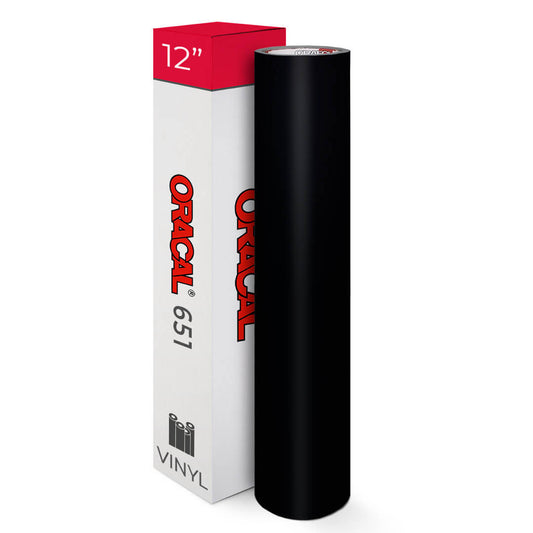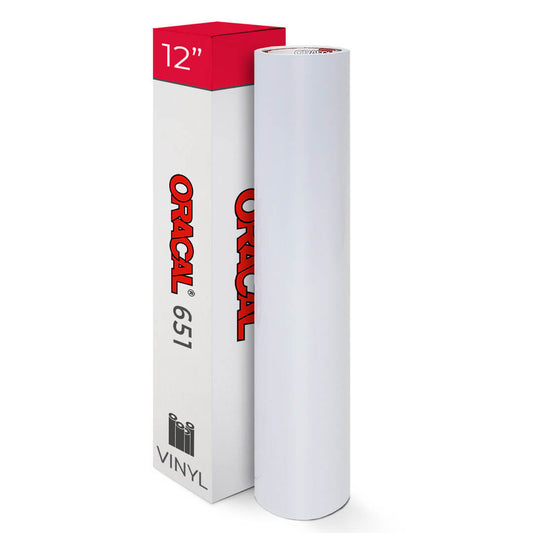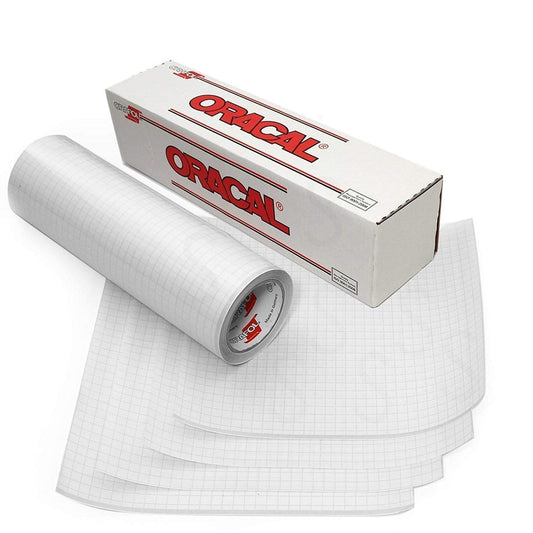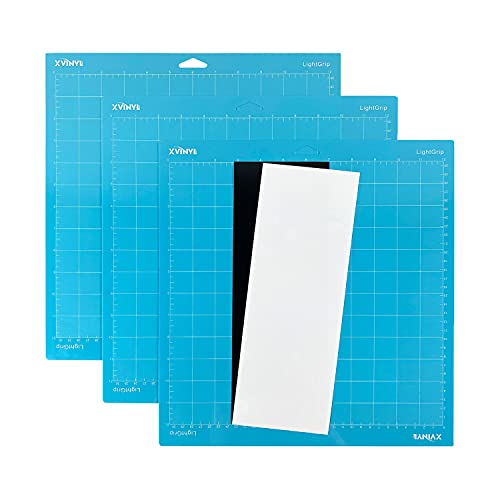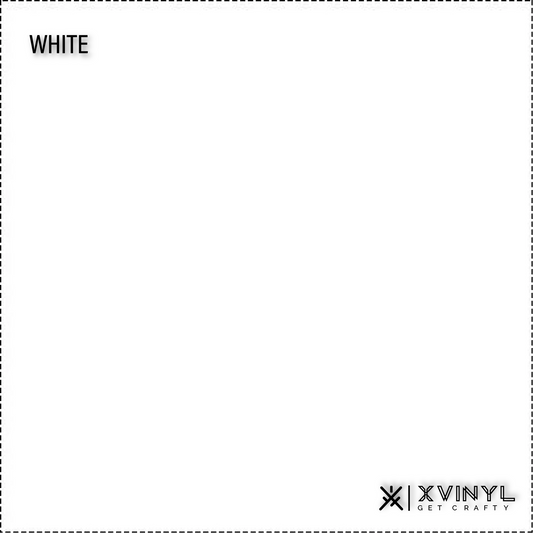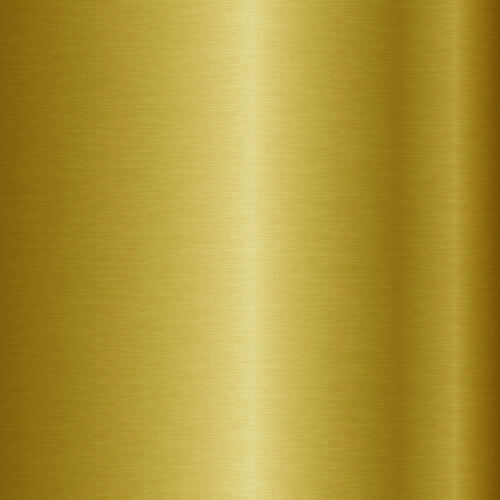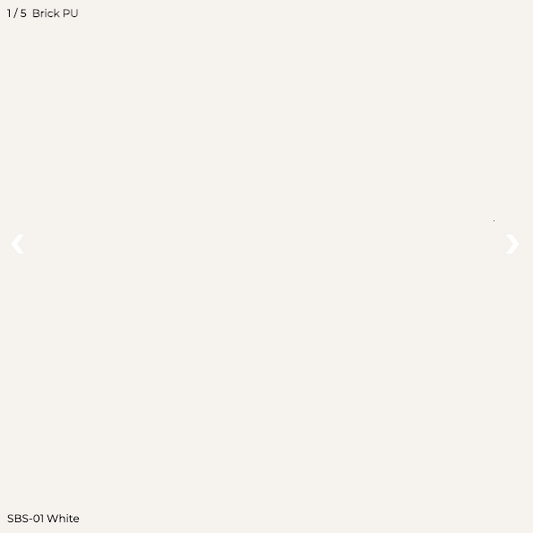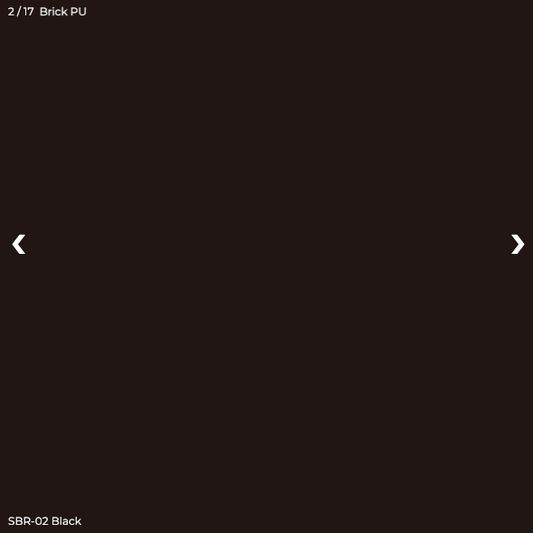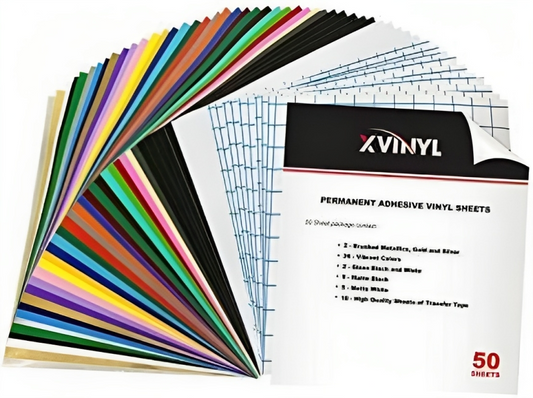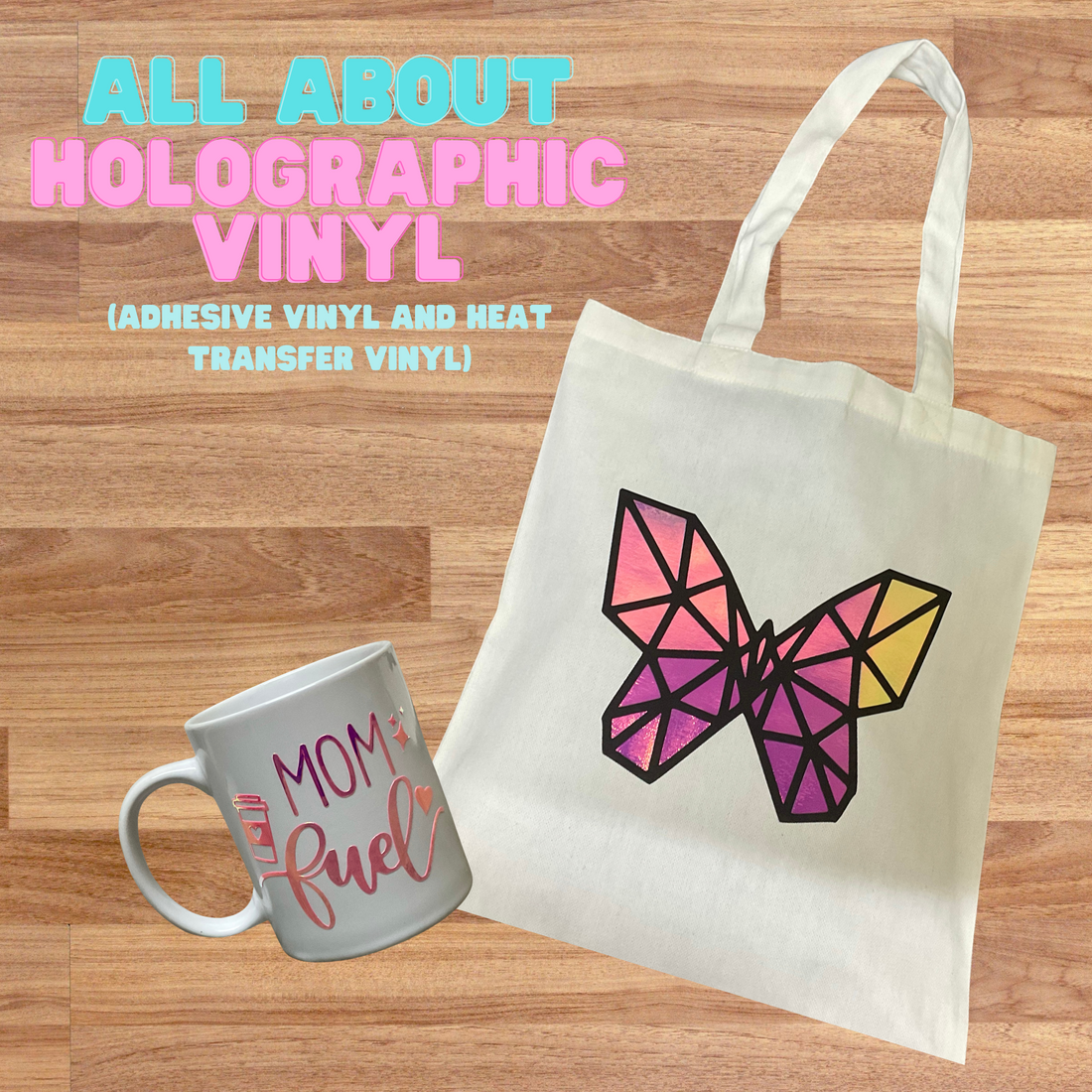All About Holographic Vinyl - Adhesive Vinyl and Heat Transfer Vinyl
Hello there, Crafters! Today we will be talking about Holographic Vinyl! I know the holographic vinyl looks slightly different from the other vinyl you’ve worked with. But trust me, you don’t have to be intimidated by its looks because when it comes to working with them, they have the same process as working with regular vinyl.
Holographic vinyl is a special type that changes colors as you move them. It has a highly reflective metallic shine that changes color depending on the lighting and angle when looking at it. It is like having an entire spectrum of colors on a vinyl sheet. Holographic vinyl is available in Adhesive and Heat Transfer Vinyl, making it perfect for any crafting project you’ll ever make!
Let us first tackle the Holographic Adhesive Vinyl.
Is there a permanent holographic?
This is one of the most frequently asked questions regarding holographic adhesive vinyl. The answer to this question is a big YES! Some holographic vinyl brands offer a permanent holographic vinyl like the StyleTech Holographic Opal. The holographic vinyl of StyleTech can last 1-2 years outdoor. Again, not all brands of holographic vinyl provide a permanent holographic vinyl.
Does Oracal 651 have holographic vinyl?
Unfortunately, Oracal 651 doesn’t have holographic vinyl. However, Orafol has its holographic vinyl called Oracal Series 351. Oracal 351 is a permanent metalized holographic craft film with three different colors.
What is holographic vinyl used for?
Applying holographic vinyl on a rough surface might affect the longevity of the adhesive of the vinyl. Just like the other types of adhesive vinyl, Holographic Adhesive Vinyl can also be applied to flat surfaces and curved surfaces as long as the surface you’re going to stick the vinyl onto is smooth, clean, and has an excellent finish. Flat surfaces include plastic, metals, concrete walls, softwood, etc., while curved surfaces include mugs, tumblers, wine glasses, and more.
Can I use holographic vinyl on mugs?
You probably know now that you can apply Holographic Vinyl on mugs since mugs are one of the listed possible substrates in the previous question. But to answer the question, YES, you can use holographic vinyl on mugs. We’ll provide a quick tutorial on applying it to a cup to help you learn how to personalize your plain profiles into something extraordinary.
1. Choose a design, measure your mug, and then adjust your design according to the measurements of your mug.
2. Send your design to cut and ensure that your cut setting is suitable for the holographic vinyl. If you’re unsure what the correct cut setting is for your holographic vinyl, you can always do a test cut to avoid frustration and save time and materials.
When applying the vinyl to the cutting mat, stick its colored side facing up. Some holographic vinyl has a thin plastic protective sheet to protect it from being scratched, and we want to remove that before sending the vinyl to cut.
3. Weed the design and then apply the transfer tape.

4. Before applying the design onto the mug, ensure it is thoroughly clean. You can use rubbing alcohol to fully dehydrate the surface and help the vinyl to stick better.
5. Remove half of the paper backing, horizontally or vertically, and carefully place it on the mug. Then, remove the other half of the paper backing and press the rest of the design onto the surface. Use an application tool and burnish the design onto the mug.

6. Remove the transfer tape. If the vinyl comes up with the transfer tape, burnish it one more time. Leave it for a couple of minutes if it is still coming up. Sometimes, vinyl adhesive may take time before they adhere entirely to the substrate.

For a more detailed tutorial on how to apply adhesive vinyl on mugs, click this link. You will be directed to an article about using Adhesive Vinyl on Mugs.
Is Holographic Vinyl microwave safe?
We wouldn’t recommend putting items that have vinyl on microwaves as it is made of PVC, which can release harmful or poisonous fumes when heated. And the same goes with dishwashers. The heat from the dishwasher might cause the vinyl to peel off the mugs. To prevent this from happening, we strongly recommend handwashing items with vinyl.
Can you iron on Holographic Vinyl?
As mentioned a while ago, holographic vinyl is available in Adhesive and Heat Transfer Vinyl. So, Yes! You can iron-on holographic vinyl if you use the HTV!
Now, let us talk about Holographic Heat Transfer Vinyl.
Like the holographic adhesive vinyl, crafting with a holographic heat transfer vinyl is pretty much the same as crafting with regular heat transfer vinyl. It also has three parts; the plastic carrier sheet at the front that acts like a transfer sheet, the actual holographic vinyl found in the middle, and the adhesive at the back of the vinyl.
Can you use a Household Iron when pressing Holographic Vinyl?
YES! You can use a household iron as an alternative for a heat press. But we would strongly recommend using a heat press as it would provide a more even pressure and heat required by the project. Still, you can use a household iron. Just make sure that you have a sturdy and even surface when pressing the project, and you’ll be just fine!
How to Use Holographic Heat Transfer Vinyl?
Step 1: Choose and set up the design.
Choose the design and measure your substrate. When you’re done taking measurements, adjust the size of your design according to the measurements you’ve just taken, and make sure to mirror your design before sending it to cut.
Step 2: Cutting your HTV
A holographic Heat Transfer Vinyl may seem thin like a standard HTV, but we will treat it like a Glitter Heat Transfer Vinyl that needs a more extended blade depth and more pressure to get a clean and thorough cut. Like a regular heat transfer vinyl, we apply the vinyl onto the mat shiny-side facing down to cut correctly. Always check the manufacturer’s recommended cut settings to avoid wasting your materials and time. Or you can also do a test cut.

After cutting, check if the cut lines are visible. If not, it is possible that the cut setting wasn’t correct, and the vinyl didn’t cut through. You can also check the carrier sheet of the vinyl; if you can see the cut lines in the carrier sheet, that would mean that you got a good cut.
Step 2: Weed the Holographic HTV
When weeding a Holographic Heat Transfer Vinyl, it may be difficult to see the cut lines. Here’s a simple trick to help you find your cut lines. Roll your HTV, shiny-side facing each other, to pop the vinyl and reveal the cut lines. Take your weeding tool and carefully weed the design.

Step 3: Weed the Holographic HTV
When weeding a Holographic Heat Transfer Vinyl, it may be difficult to see the cut lines. Here’s a simple trick to help you find your cut lines. Roll your HTV, shiny-side facing each other, to pop the vinyl and reveal the cut lines. Take your weeding tool and carefully weed the design.
Step 4: Preheat the Substrate
Preheat your substrate for about 5 to 10 seconds. This step will help you eliminate the wrinkles and creases on your substrate while removing any moisture. Preheating will also help the vinyl to adhere easier and quicker.
Step 5: Apply the Vinyl
After preheating, you can now place the vinyl on the substrate. Take time to ensure that your design is even, centered, and in your desired place. Before pressing, check if your heat press is in the correct settings. Most Holographic Vinyl heat setting is at 320°F and pressed for 15 to 20 seconds. Don’t forget to place a protective sheet on top of the vinyl and then press.

A protective sheet is needed to prevent the vinyl from over-heating and prevent the carrier sheet from melting to your heat press. Protective sheets can be in the form of Teflon sheets, multi-purpose paper, parchment paper, baking paper, and even thin tea towels.
Step 6: Peel Cold
When working with a Holographic HTV, we must wait and let the vinyl cool down before peeling the carrier sheet off. If you don’t have much time to wait, you can speed up the process by rubbing the vinyl on a glass window. Doing this will help the vinyl to cool down quicker.
If the vinyl is cold to touch, you can now start to peel off the carrier sheet.

Note:
When working with a layered design, ensure that the Holographic HTV is the topmost layer.
And there you have it! We hope this article has been helpful to you; if you have more inquiries, feel free to message us on our social media accounts, and we’ll be more than happy to answer them all! You can also share this article with your friends and families to encourage them to try crafting with holographic vinyl. Follow us on our social media accounts for crafting tips and tricks, store discounts, new products, and more!
FB: CraftVinyl.ca
IG: craftvinyl.ca
TikTok: CraftVinyl.ca
And also, check out our store, www.craftvinyl.ca. We offer crafting supplies like adhesive vinyl and heat transfer vinyl. Thank you, stay safe and crafty, Crafters!
GUIDE TO BUYING ADHESIVE VINYL VS HTV

